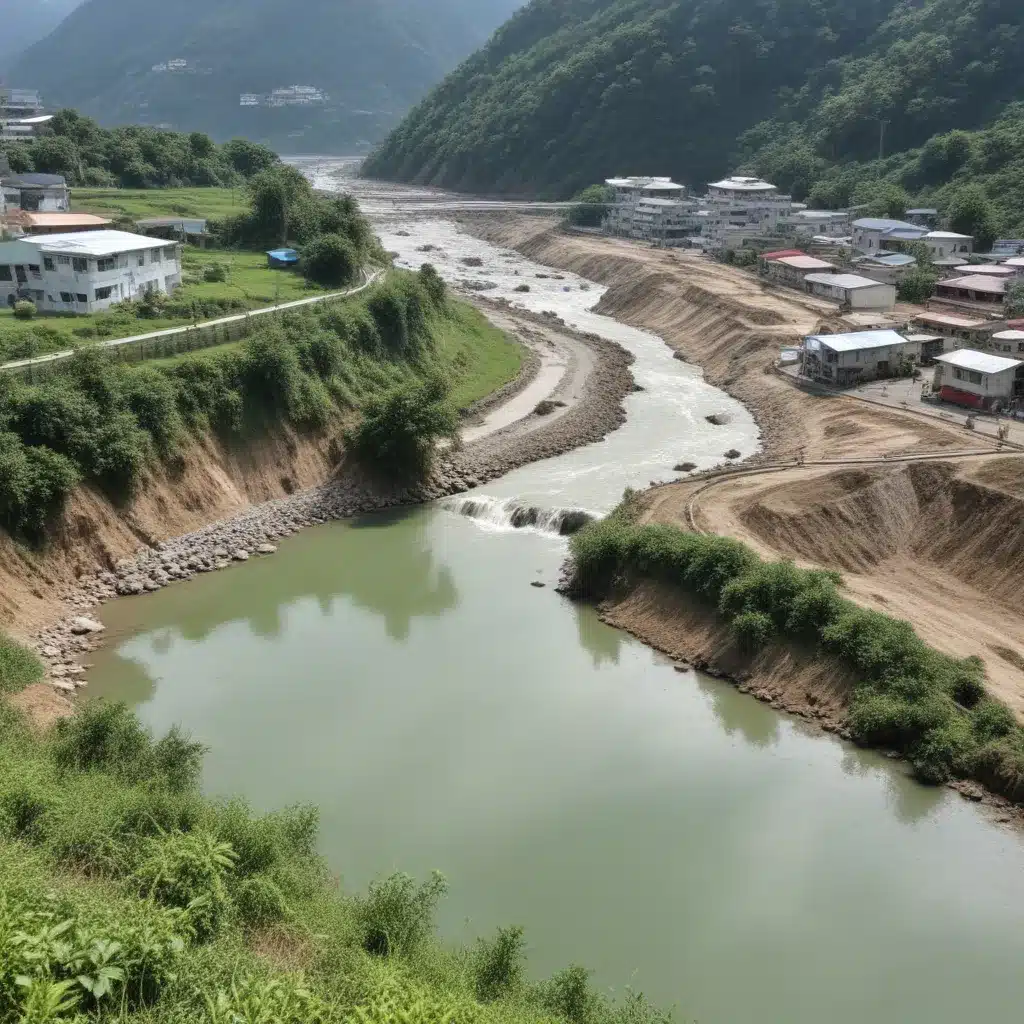
Understanding the Hsinchu Science Park’s Reliance on Water
The Hsinchu Science Park (HSP) in Taiwan plays a vital role in the global semiconductor production chain. As a hub for high-tech manufacturing, the HSP requires a stable and abundant water supply to support its operations. However, the region has been facing significant water scarcity challenges, which have the potential to disrupt the semiconductor industry and ripple through the global supply chain.
The primary sources of water for the HSP are the Baoshan Reservoir (BS) and the Baoshan Second Reservoir (BSR). These two reservoirs are essential in providing the necessary water for the semiconductor fabrication plants and supporting industries within the park. As climate change alters precipitation patterns and increases the frequency and severity of droughts, understanding the impacts on the water supply to the HSP becomes crucial for ensuring the sustainability and resilience of this critical industrial hub.
Assessing the Impact of Climate Change on Water Availability
To better understand the implications of climate change on the water supply to the HSP, researchers from the Joint Action for Water initiative conducted a comprehensive study, the findings of which are presented in this article.
Methodology and Modeling Approach
The research team employed a combination of hydrological modeling and water system operation modeling to assess the impact of climate change on the inflow, outflow, and water storage volume (WSV) of the Baoshan Reservoir and the Baoshan Second Reservoir.
The Soil and Water Assessment Tool (SWAT) was used to simulate the hydrological processes within the watershed, incorporating climate data from various Representative Concentration Pathway (RCP) scenarios outlined in the Intergovernmental Panel on Climate Change’s (IPCC) Fifth Assessment Report (AR5). The RCP scenarios, ranging from RCP2.6 to RCP8.5, represent different greenhouse gas concentration trajectories and their corresponding impacts on the climate system.
The researchers then coupled the SWAT model with an operational model of the BS and BSR reservoirs to evaluate the changes in water supply under the different climate change scenarios and time periods, including 2021-2040, 2041-2060, 2061-2080, and 2081-2100.
Key Findings
The study’s findings paint a concerning picture for the future water supply to the Hsinchu Science Park:
-
Rainfall Seasonality and River Flow Variability: The simulations indicate that more intense global warming, as represented by higher RCP scenarios, will result in more pronounced rainfall seasonality. This means wetter wet seasons and drier dry seasons, leading to more magnified seasonality in river flow and water availability.
-
Worsening Water Scarcity During the Dry Season: The critical period of water shortage for the HSP is typically from February to May. The study found that future water scarcity is expected to worsen during this time, with increased frequency and duration of low water storage volumes in the reservoirs.
-
Declining Water Storage Volumes: Out of the 16 combinations of climate change scenarios and time periods examined, 13 indicate lower water storage volumes in the future compared to the baseline period. The annual mean number of ten-day periods with water storage volumes below the operational rule curve ranged from 4.84 to 6.95, higher than the baseline of 4.81 ten-day periods.
-
Significant Economic Impacts: The study estimates that the most significant economic impact will occur under the RCP6.0 scenario during the 2041-2060 period, reaching an annual loss of around USD 1 billion, which represents approximately 2.37% of the 2023 annual production value for the HSP.
Operational Warning Indicators
To help manage the water supply challenges, the researchers identified a three-month cumulative rainfall threshold as an operational warning indicator for the Hsinchu Science Park. By monitoring this threshold, decision-makers can proactively address potential water shortages and implement appropriate mitigation strategies.
Implications and Recommendations
The findings of this study have far-reaching implications for the Hsinchu Science Park, the semiconductor industry, and the global supply chain. The expected decline in water availability and the increased frequency of water scarcity pose significant risks to the stability and continuity of semiconductor manufacturing operations within the HSP.
To address these challenges, several actions should be considered:
-
Diversification of Water Sources: Explore alternative water sources, such as groundwater, recycled water, or desalination, to reduce the reliance on the Baoshan Reservoir and Baoshan Second Reservoir.
-
Water Efficiency and Conservation Measures: Implement advanced water-efficient technologies and adopt best practices in water management within the semiconductor fabrication plants and supporting industries.
-
Collaboration and Policy Engagement: Work closely with local authorities and policymakers to advocate for comprehensive water resource management strategies that address the impacts of climate change and prioritize the water security of the Hsinchu Science Park.
-
Resilience Planning and Contingency Measures: Develop robust contingency plans and emergency response protocols to mitigate the impacts of water shortages and ensure the continuity of semiconductor production during periods of water scarcity.
-
Continuous Monitoring and Adaptation: Regularly monitor the water supply and demand dynamics, updating the impact assessment and adapting mitigation strategies as the climate change landscape evolves.
By proactively addressing the water supply challenges and building resilience, the Hsinchu Science Park can safeguard its critical role in the global semiconductor value chain and contribute to the overall sustainability of the industry.
Conclusion
The impact assessment conducted by the Joint Action for Water initiative highlights the significant threats that climate change poses to the water supply for the Hsinchu Science Park in Taiwan. The expected decline in water availability and the increased frequency of water scarcity present a serious risk to the semiconductor manufacturing operations within the park, with far-reaching consequences for the global supply chain.
To ensure the long-term sustainability and resilience of the Hsinchu Science Park, a comprehensive approach is required, encompassing water diversification, efficiency measures, policy engagement, and contingency planning. By addressing these challenges, the semiconductor industry can safeguard its critical role in the global economy and contribute to a more resilient and sustainable future.

